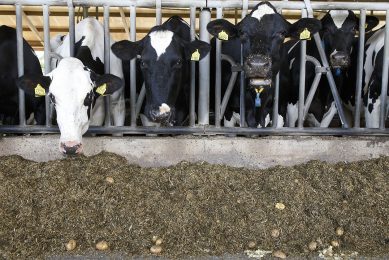Methane cutting products at ADSA/ASAS/CSAS
A plant extract combination of cinnamaldehyde, eugenol and garlic may have potential to reduce methane emissions from ruminant livestock. That is according to results of in vitro experiments to be presented at the American Dairy Science Association/American Society of Animal Science/Canadian Society of Animal Science (ADSA/ASAS/CSAS) symposium in Montreal from 12 to 16 July.
The methane work is one of 18 contributions to the event by Geneva-based animal nutrition company Pancosma. These include five oral and seven poster presentations about plant extract based performance enhancement; two of each about sweetening technology; and two oral presentations about the glycinate form of organics trace elements.
The research findings being unveiled include: new commercial scale evidence of enhanced growth rates and feed efficiency in beef cattle from supplementation with eugenol, cinnamaldehyde and capsicum plant extracts; the anti-oxidant potential of cinnamaldehyde; the potential in pigs for sweetener SUCRAM® to increase the glucose absorption capacity of the gut; and development of new improved analytical techniques to measure the stability of glycinate trace element supplements.
Under the leadership of R&D director Dr David Bravo, Pancosma’s contribution to this symposium are symbolic of the potentially conflicting demands from society and regulators on farming, according to head of marketing Gavin Raper. “On the one hand, climate change imperatives mean greenhouse gas emissions from livestock production are under scrutiny, with methane a particular focus,” he says. “On the other, to feed the growing global population we can leave no stone unturned in the quest for sustainably higher productivity in animal production systems.”
One outcome of Pancosma’s R&D investment revealed by the symposium papers and posters is the discovery of new dimensions to existing materials. For example, Mr Raper cites the sweetener SUCRAM®, used for more than 10 years in animal nutrition as a taste enhancer and appetite stimulant, which may also create a physiological advantage on the gut’s absorptive capacity for glucose.
Another important consideration for feed manufacturers using performance enhancing micro-ingredients is that their performance is dependent on the physical and chemical properties of carrier mechanisms. This explains, says Gavin Raper, why Pancosma allocates R&D investment to developing analytical techniques to measure, for example, micro-ingredient levels and the effectiveness of delivery systems such as micro-encapsulation with great precision and confidence.
Related website:
Pancosma
Related folder:
Dossier AllAbout Plant Extracts











